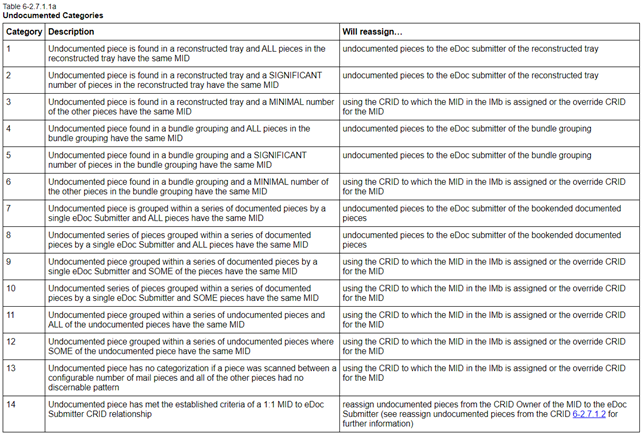The Mailer Scorecard is important for both mail owners and mail service providers (MSPs). Are you downloading your Mailer Scorecard daily (or at least weekly)? If not, you’re missing an opportunity to better understand and pinpoint when and where errors occur.
“So what?” you may ask. Well, reviewing your Scorecard throughout the month allows you to correct course more quickly as errors occur. When you can take more immediate action, you may avoid exceeding assessment thresholds or at least can minimize the impact of assessments.
Let’s take a look a high level overview of what the Mailer Scorecard is, who it helps, and why it’s important to both mail owners and MSPs (additional details regarding the postage assessment process and fees can be found in Sections 6 and 7 of Pub 685):
As its name implies, the Mailer Scorecard provides a snapshot of how healthy your Full-Service letter and flat mail activity is (including First Class and Marketing/Standard Mail, Periodicals, and Parcels), including daily reports, at any given time. It’s available to both the mailer and mail owner/preparer, with the “mailer” being the electronic documentation (eDoc) submitter (which could be the mail owner or MSP).
NOTE: If you are currently in the Automated Verifications (aka Seamless Parallel) stage of Seamless Acceptance, you are not subject to assessments for exceeding thresholds, meaning the data provided is for informational purposes. You’ll move into Full Seamless after having one month with a Scorecard that is below threshold for assessable Seamless categories. This said, reviewing your Scorecard closely during this stage allows you to find and fix problems which could creep up again even after having a Scorecard below threshold.
Assessable Seamless Acceptance categories include:
· Undocumented
· Delivery Point
· Nesting/Sortation
· Postage
· Weight
· Mail Characteristic errors (examples include specific mail class or Nonprofit eligibility)
Since Undocumented errors are the most prevalent as well as the most difficult and time-consuming to research and dispute (according to our customers), I’ll focus on this area for illustration purposes. Please keep in mind that assessments only exist to ensure that postage due has paid, and you can effectively dispute an assessment by showing payment for the pieces in question within the allotted time provided after an assessment.
The threshold for Undocumented is 0.3%.
From Section 6-2.7.1.7 Resolving Barcoded Pieces Not in eDoc:
MID Owners or the reassigned party (i.e., MSP) are responsible for ensuring proper postage is paid for all known undocumented pieces regardless of error threshold. For example, if an eDoc file is not uploaded or a postage statement is not finalized, postage has not been collected in PostalOne! for those pieces. If a MID Owner or reassigned party becomes aware of such a situation, or any other which caused pieces to be accepted and processed by the Postal Service without payment, they are responsible for correcting the error and paying the appropriate postage.
At the end of the month, mailers with error percentages that exceed the 0.1% operational variability ceiling go through the following process:
Mailers must categorize their “Known Undocumented” pieces using one of the following reasons:
- Single-piece not in eDoc (rejected from auto mailing or planned).
- Metered pieces in presort mailing without eDoc (hard copy).
- Pre-cancelled stamps in presort mailing without eDoc (hard copy).
- Permit Imprint pieces in presort mailing without eDoc (hard copy).
- Spoiled/shorted pieces are re-created and not re-submitted in eDoc.
- PS Form 3606, Certification of Bulk Mailing.
- eDoc upload failure to PostalOne!.
- Identified pieces from mailing in previous month – scan had a 93 barcode.
- Mailing is not finalized.
- Priority Mail Open and Distribute (PMOD) without eDoc.
- Pieces on Full-Service Postal Wizard.
Additionally, you’ll need to keep a Known Undocumented Log (KUL) for errors above 0.1% but below the 0.3% threshold (or may be subject to additional assessment).
Here is a chart (from Section 6-2.7.1.1a of Pub 685) that describes each of the Undocumented categories and how those pieces are reassigned:

It is also helpful to understand the exceptions to the Undocumented piece requirement (from Pub 685: Section 6-2.7.1.5):
2. Piece scans of IMbs that are not 20, 25, 29, or 31 digits long.
3. Piece scans that did not associate due to the eDoc piece being non-unique.
4. Pieces that were scanned during a PARS operation:
5. Piece scans following a PARS operation that meet the following criteria:
a. Piece scans share the same ID tag as the PARS operation (for 30 days).
b. Piece scans follow a PARS operation with a Barcode ID of 93 where the MID/STID/Serial match a piece in eDoc in the previous 45 days.
6. Pieces with a Business Reply Mail or Courtesy Reply Mail STIF (050, 051, 052, 700, 703, 708).
Next, let’s take a deeper look at the newest category: Undocumented Category 14, which was introduced in January of 2022 and has only been an assessable category since January 1, 2023 (NOTE: reassignment was fully implemented on October 30, 2022, with the Phase III enhancement to the Seamless Category 14 Undocumented logic).
The following are the most pertinent details from the associated Release Notes:
The United States Postal Service® has determined that many Mail Owners use the services of a single eDoc Submitter. This singular relationship presents an opportunity, when confirmed with historical data, to reassign undocumented pieces from the Mail Owner to the eDoc Submitter. This will give eDoc Submitters visibility into undocumented errors that they can now resolve. Unassociated piece scans with a barcode referencing a Mail Owner MID who exclusively uses a single eDoc Submitter CRID will be assigned to the eDoc Submitter CRID in Undocumented Categorization and Invoicing. This assignment will also come with a new categorization, Category 14, which will take precedence over all existing categorizations. A grace period of at least 3 months will be allowed before invoicing errors logged as Category 14. Mailers who subscribe to MQD should ensure they are receiving warnings as part of their Undocumented feed if they would like visibility into the new Category 14 errors during the grace period (USPS Release Notes: Jan 23, 2022).
So, whether you have had any issues with Undocumented pieces or with Nesting/Sortation or any other Seamless issues, and you’re in Seamless Parallel or Full Seamless, it’s imperative to keep a close eye on your Mailer Scorecard. It’s equally important to put QA measures in place. It’s a good idea to look into automating manual processes which tend to cause assessable errors (such as running files back through Presort, which creates multiple Mail.dat versions – so there’s a likelihood what’s submitted won’t match what’s on the eDoc, for example). It’s also important to keep that Known Undocumented Log if any of the 10 reasons above exist. Speak with your trusted software providers (like BCC Software) to find new and better ways of capturing and retaining historical job data, along with faster ways to research and present USPS with documentation to dispute assessments whenever possible, should you receive any.
Seamless Acceptance is the future of business mail. It’s in your best interest as a mailer to get on board soon. There’s also a Seamless Incentive which offers mailers $1/thousand pieces just for becoming fully Seamless (you do have to apply in order to receive the incentive!).
If there are any topics you’d like me to discuss in future issues, please let me know! It’s my goal to provide useful and actionable information to the industry!
Lisa Leslie is Strategic Account Manager, BCC Software, a BlueCrest Company. Visit www.bccsoftware.com for more information.













